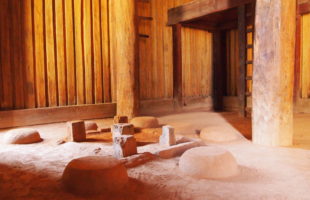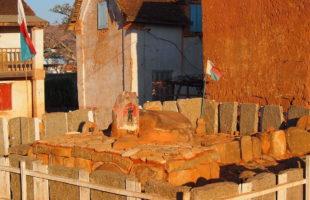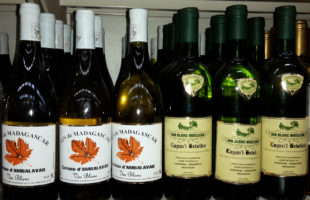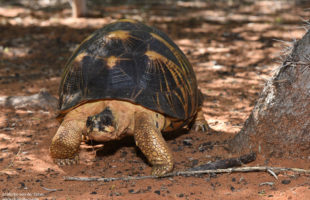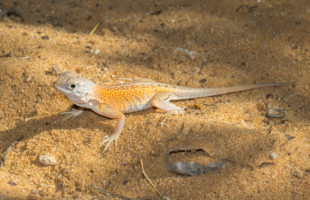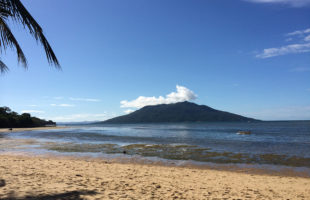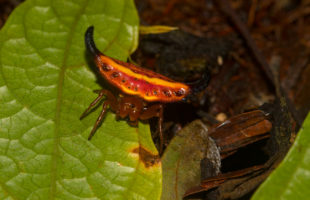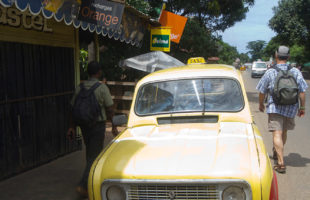After about twenty years, Andriantsimitoviaminandriandehibe died around 1670, and his oldest son Razakatsitakatrandriana came into power. He married two wives, Ravololontsimitovy from his father’s clan and Rafoloarivo from another clan, with whom he got four sons and six daughters. Whether it is by accident that both women share the names of his grandfather’s wives, or whether it might have been …
LesenMasika sipa
The beginning of the Merina kingdom
According to deliverance, the first king of the Merina people was Andrianerinerina (andrian = king, Nerinerina = his actual name). Legend tells he came from heaven and subdued the legendary Vazimba people, and later Merina came out of this first people. His regency was followed by the queens Andriananjavonana, Andrianamponga I., Andrianamboniravina, Andranolava, Rafandrandava, Ramasindohafandrana, Rafandrampohy and Rafandramenitra. Written evidence …
LesenViticulture in Madagascar
In 19th century yet, Jesuitical missionaries and with them, their knowledge about viticulture reached the island of Madagascar. In 1802, the botanist André Michaux cultivated vines of the sort “Isabelle” (Vitis labrusca) in the area around Ivondro for the first time – rather more due to curiosity than because of economical reasons. In 1845, the French man Jean Laborde produced …
LesenClad in armour but hardly protected: The Radiated Tortoise
They have not changed for millions of years and still fascinate people all over the world: tortoises. A particularly beautiful species lives in the south of Madagascar: the Radiated Tortoise (Astrochelys radiata). Its history begins long, long before the first people came to Madagascar. But it was not until 1802 that the Englishman George Shaw described the Radiated Tortoise. He …
LesenLife in drought and heat – The Malagasy collared lizard
Only few animals can survive in Madagascar’s dry, hot south for long. One of them is the Madagascar sand lizard (Chalarodon madagascariensis). Madagascar has no large iguanas like you probably know iguanas from America. Instead the local iguanas are rather small, agile and swift – they are so special, that they got their own family, which exists nowhere else on …
LesenNosy Komba
Nosy Komba, in English Lemur Island, is the nickname of a small island in the canal of Mozambique on Madagascar’s northwest coast. It belongs to the Diana region and is only a few kilometers from the nearest village on land, Ankify. From the port of Doany, it takes about twenty minutes by motorboat across the sea, from Nosy Be it …
LesenThe Malagasy Tree Boa
Saying of many ages and fairy tales she has a dubious reputation, but actually she is a fascinating forest dweller: The Malagasy Tree Boa. There are two species of Tree Boa in Madagascar. The species Sanzinia madagascariensis lives mainly in the rainforests of the east coast of Madagascar. The second species, Sanzinia volontany, has conquered other habitats such as the …
LesenNo fear of tiny spines
Rainforests are their home: Tiny, colorful, spiny creatures in spider webs. These are spiny orb weavers, and they do not really fit into the concept of a scary, quickly moving eightlegged spider. Their unusually shaped belly part does not look scary at all. In contrast to normal spiders, they even move rather slowly and ponderously, you might almost find them …
LesenRenault 4 – The Malagasy Taxi
Everywhere in Madagascar’s towns and villages they travel as normal taxis: the Renault 4s. Elsewhere one sees them at most still as well maintained classic cars on exhibitions or in lover garages, on Madagascar however they belong to the completely normal street scene. But why the R4? As early as the end of the 1950s Renault wanted to plan a …
LesenReniala reserve
Reniala: The name means as much as “mother of the forest”, which is the nickname of the baobabs endemic to this area. Location: Deep down at the southwestern coast of Madagascar, about 30 km away from the big city Toliara (Tuléar), there is the small village Ifaty-Mangily directly at the sea. You can reach it since 2016 via a well-paved …
Lesen MADAMAGAZINE Your Magazine about Madagascar
MADAMAGAZINE Your Magazine about Madagascar
